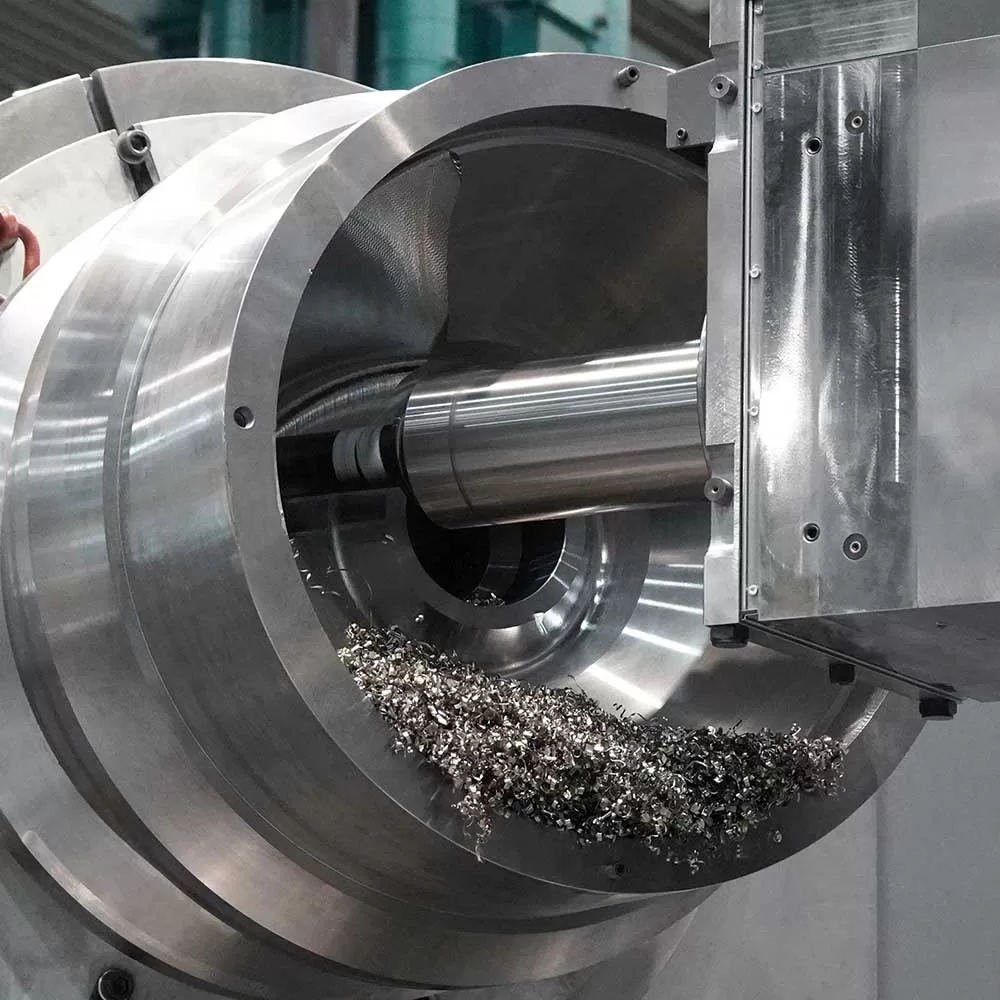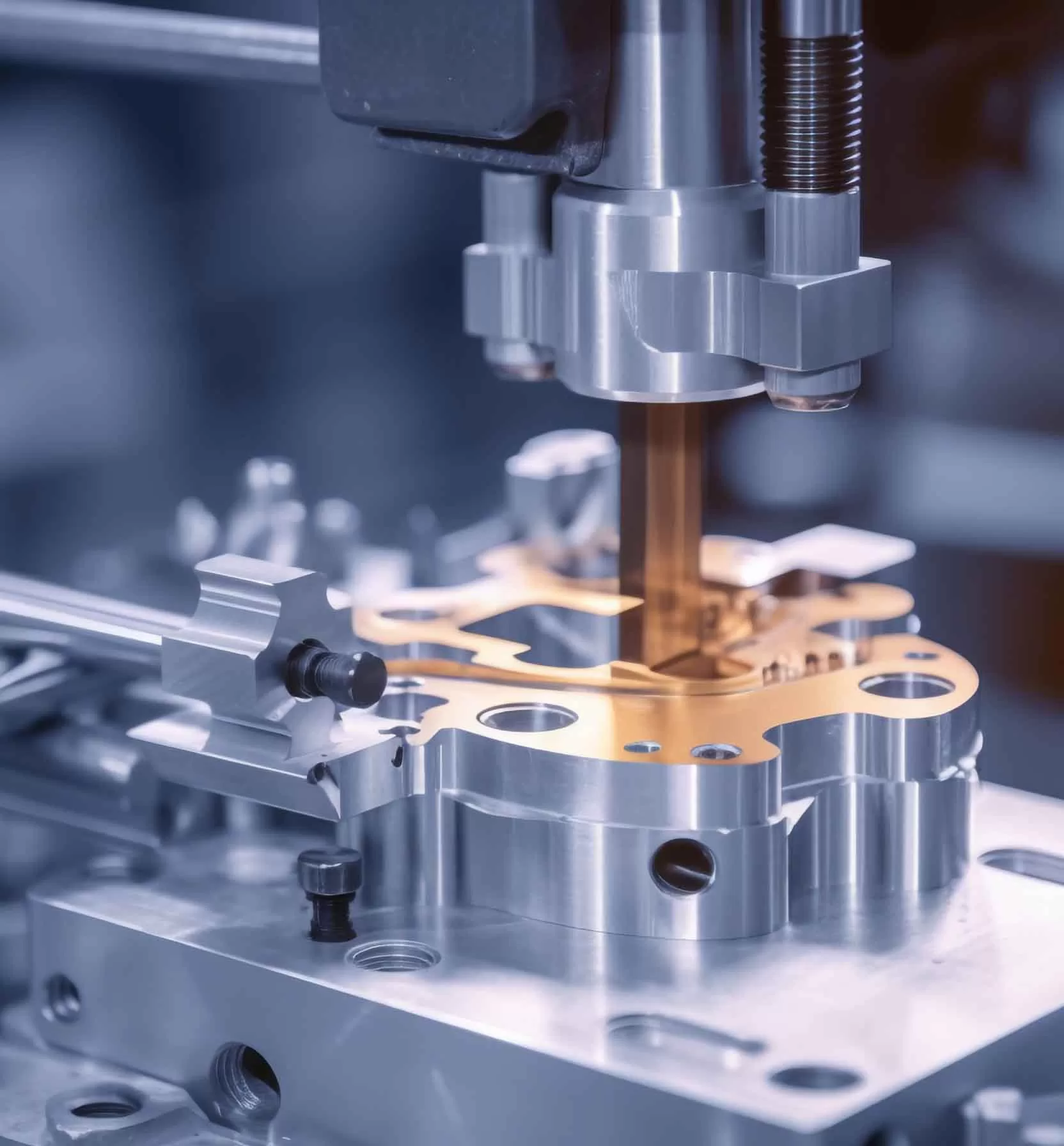As a high-efficiency equipment, CNC lathes are one of the most common machining methods for titanium parts. What steps are needed to machine titanium on a CNC lathe? What are the tips for CNC lathe machining titanium? Today, I will take you to learn the relevant knowledge of CNC machining titanium.

The main contents of CNC lathe machining titanium parts include the following aspects:
- Select and determine the content of titanium parts that need CNC lathe machining;
- Carry out CNC lathe turning machining analysis on titanium parts drawings;
- Selection and adjustment design of tools and fixtures;
- Design of processes and steps;
- Calculation and optimization of processing trajectory;
- Compilation, verification and modification of programs for turning titanium parts on CNC lathes;
- First piece trial processing and handling of on-site problems;
- Compilation of NC machining process technical documents; in short, the NC machining process has a lot of content, some of which are similar to ordinary machine tool processing.
Process analysis is the preliminary process preparation work for CNC lathe processing titanium. Whether the process is formulated reasonably or not has an important impact on the programming of the program, the processing efficiency of the machine tool and the processing accuracy of titanium parts. In order to compile a reasonable and practical processing program, the programmer is required not only to understand the working principle, performance characteristics and structure of the CNC lathe. To master the programming language and programming format, you should also be proficient in the processing technology of titanium workpieces, determine the reasonable cutting amount, correctly select the tool and workpiece clamping method, and also understand the mechanical properties of various titanium alloy profiles. Therefore, the general process principles should be followed and combined with the characteristics of CNC lathes, the process analysis of CNC turning titanium should be carefully and detailedly analyzed. Its main contents include: analyzing the processing requirements and rationality of titanium parts according to drawings; determining the clamping method of titanium workpieces on CNC lathes.
Analyzing Titanium Parts Drawings
Parts drawing analysis is the primary task in formulating the machining process of titanium parts CNC lathe. Mainly carry out dimensioning method analysis, outline geometric element analysis, precision and technical requirement analysis. In addition, the rationality of the structure and processing requirements of titanium parts should be analyzed, and the process benchmark should be selected.
- Dimensioning method analysis. The dimensioning method on the titanium part drawing should be adapted to the processing characteristics of the CNC lathe, and the dimensions should be marked on the same basis or the coordinate dimensions should be given directly. This marking method is not only convenient for programming, but also conducive to the unification of design reference, process reference, measurement reference and programming origin. If there is no uniform design basis for the dimensions in each direction on the titanium part drawing, it may be considered to select a unified process standard without affecting the precision of the titanium part. Calculation transforms each dimension to simplify programming calculations;
- Profile geometry analysis. In manual programming, the coordinates of each node should be calculated. All geometric elements of the outline of the titanium part should be defined during automatic programming. Therefore, when analyzing titanium part drawings, it is necessary to analyze whether the given conditions of geometric elements are sufficient;
- Analysis of precision and technical requirements. The analysis of the precision and technology of titanium parts to be processed is an important part of the manufacturability analysis of titanium parts. Only on the basis of analyzing the dimensional accuracy and surface roughness of titanium parts can the correct and reasonable selection of processing methods, clamping methods, cutting tools and cutting parameters, etc. be performed. Its main contents include: analyzing whether the accuracy and various technical requirements are complete and reasonable; analyzing whether the CNC turning machining accuracy of this process can meet the requirements of the drawing, if not, when other processing methods are allowed to make up for it, a margin should be left for the subsequent process; for the surface with position accuracy requirements on the drawing, it should be completed in one clamping; for the surface with higher surface roughness requirements, constant linear speed cutting should be used (note: when turning the end face, the maximum spindle speed should be limited).
Fixture and tool selection
Clamping and positioning of the workpiece. In CNC lathe processing of titanium parts, it is possible to process all or most of the machining surfaces after one clamping, and minimize the number of clamping times to improve processing efficiency and ensure processing accuracy. For shaft titanium parts, the outer cylindrical surface of the titanium part itself is usually used as the positioning reference; for sleeve titanium parts, the inner hole is used as the positioning reference. In addition to the general-purpose three-jaw self-centering chuck, four-jaw chuck, hydraulic, electric and pneumatic clamps, CNC lathe fixtures also have a variety of special fixtures with good versatility. It should be chosen reasonably in actual operation.
Tool selection. The service life of the tool is not only related to the material of the tool, but also has a great relationship with the diameter of the tool. The larger the tool diameter, the greater the amount of cutting it can withstand. Therefore, when the shape of titanium parts allows, using the largest possible tool diameter is an effective measure to prolong tool life and increase productivity. The tools commonly used in CNC turning are generally divided into three categories. That is, pointed turning tools, arc turning tools and forming turning tools.
(1) Pointed turning tool. Turning tools characterized by straight cutting edges are generally referred to as pointed turning tools. The tip of the tool is composed of linear main and auxiliary cutting edges, such as outer circular eccentric tools, end turning tools, etc. When this kind of turning tool processes titanium parts, the contour shape of titanium parts is mainly obtained by the displacement of an independent tool tip or a linear main cutting edge.
(2) Arc-shaped turning tool. In addition to turning the inner and outer circular surfaces, it is especially suitable for CNC lathes to process various smooth and connected forming surfaces. It is characterized in that the shape of the blade constituting the main cutting edge is a circular arc with a small roundness error or line profile error, and each point of the circular arc edge is the tip of the circular turning tool, so the tool position is not on the circular arc, but on the center of the circular arc.
(3) Forming turning tool. That is to say, the contour shape of the processed titanium parts is completely determined by the shape and size of the turning tool blade. In CNC turning, the commonly used forming turning tools include small radius arc turning tools, groove turning tools and thread turning tools. In order to reduce the tool change time and facilitate tool setting, it is convenient to realize the standardization of machining. In CNC turning processing, indexable turning tools with machine clamps should be used as much as possible.
Cutting amount selection
The cutting amount in CNC lathe machining titanium includes the amount of back cutting ap, the spindle speed S (or cutting speed υ) and the feed rate F (or feed rate f). The selection principle of cutting amount, reasonable selection of cutting amount is very important to improve the processing quality of CNC lathe. When determining the cutting amount of the CNC lathe, it must be selected according to the requirements specified in the machine tool manual and the durability of the tool. It can also be determined by analogy in combination with actual experience. The general selection principle is: during rough turning, first consider selecting the largest possible back engagement ap if the rigidity of the machine tool allows; secondly choose a larger feed rate f; finally determine a suitable cutting speed υ according to the allowable life of the tool. Increasing the amount of back feed can reduce the number of tool passes and improve processing efficiency, and increasing the feed rate is conducive to chip breaking. When finishing the car, you should focus on how to ensure the processing quality, and improve the processing efficiency as much as possible on this basis. Therefore, it is advisable to choose a smaller back cutting amount and feed rate to increase the processing speed as much as possible. The spindle speed S (r/min) can be calculated according to the cutting speed υ (mm/min) by the formula S=υ1000/πD (D is the diameter of the workpiece or tool/tool in mm), and can also be determined by looking up the table or based on practical experience.
Divide the process and plan the processing sequence
The principle of process division. There are two commonly used division principles for machining titanium parts on CNC lathes. (1) Maintain the principle of precision. The process generally requires as much concentration as possible, and the rough and finish machining are usually completed in one clamping. In order to reduce the influence of thermal deformation and cutting force deformation on the shape, position accuracy, dimensional accuracy and surface roughness of the workpiece, rough and finish machining should be carried out separately. (2) The principle of improving production efficiency. In order to reduce the number of tool changes, save tool change time, and improve production efficiency, after the processing parts that need to be processed by the same knife are completed, another tool should be used to process other parts, and the idle travel should be minimized at the same time.
Determine the processing sequence. The processing sequence generally follows the following principles: (1) Rough first and then fine. Carry out in the order of rough turning, semi-finishing turning and finishing turning, and gradually improve the machining accuracy. (2) Close first and then far. The part close to the tool setting point is processed first, and the part far away from the tool setting point is processed later, so as to shorten the tool moving distance and reduce the idle travel time. In addition, turning near first and then far is also conducive to maintaining the rigidity of the blank or semi-finished product and improving its cutting conditions. (3) Inside and outside cross. For titanium parts that have both inner and outer surfaces to be processed, the inner and outer surfaces should be roughed first, and then the inner and outer surfaces should be finished. (4) Base first. The surface used as a fine reference should be machined first. The more accurate the surface of the positioning reference, the smaller the clamping error.
Summarize
CNC lathe processing titanium parts is a very complicated process. For customized titanium parts, professional CNC lathe processing knowledge and experience are required. If you need CNC machining titanium parts, please contact us.


